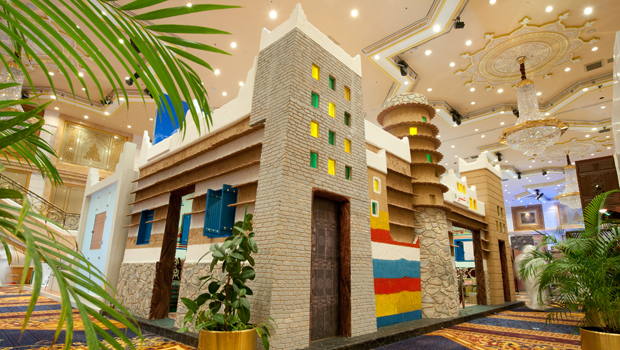Early visitors to the show at Jeddah Hilton included parties of boisterous schoolboys clutching carrier bags stuffed with free literature and shepherded by harassed looking teachers as well as demure groups of schoolgirls carrying clipboards floating between exhibits.
The exhibition hall positively buzzed with their energy as they made the most of the opportunity to see everything on show.
Popular was the Asir province stand, which was certainly the most original and striking in the show.
Constructed to include many of the unique architectural features that typify the province, the interior included fabrics and pottery from the region that has made it justifiably famous as the craft workshop of the western part of the Kingdom.
It is also a perfect example of the self-motivation that brought this area to notice on the national heritage trail and is completely in sync with the ethos of the exhibition, which is of restoration and development.
The inhabitants of the village of Rijal Almae took the initiative and banded together to restore and stock their now famous museum as well as their unique stone built dwellings to original specifications, keeping their character and distinct culture alive and well.
Less easy to restore and develop but under way in Riyadh is the transformation of Wadi Hanifa, the home of the ancient mud city of Diriya and perhaps the foundation stone of modern Saudi Arabia.
The exhibit focusing on the development showed the plans and stage of development of this huge and sensitive project. Already parts of the wadi have transformed from a wandering stream in a shallow ravine to desirable residential properties. When the development is complete, if all goes to plan the area will be a modern residential and visitor area that retains the key elements of the local architectural style.
The transformation of Makkah from a small dusty city into the modern religious metropolis that in a few years it will become is fully under way.
An architect’s model of the Jabal Omar project, one of several that already or will surround the Grand Mosque, attracted regular attention. The physical model better delivered the full impact of the changes being wrought on the holy city than pictures and the exhibit attracted groups of visitors who were given detailed explanations of the project.
The exhibition is a celebration of architectural form and inventiveness. There was an exuberance among designers and planners to use and develop impressively modern buildings based on classic Arab form and shape.
Unlike the production line glass and concrete slabs that compete for skyline space in some cities, there is a sense that the parameters of classical Arab design have inspired architects to enjoy the challenges of developing a real modern version of classical Arabic style and establish and define a modern and very recognizable style for the emerging Arab world.










